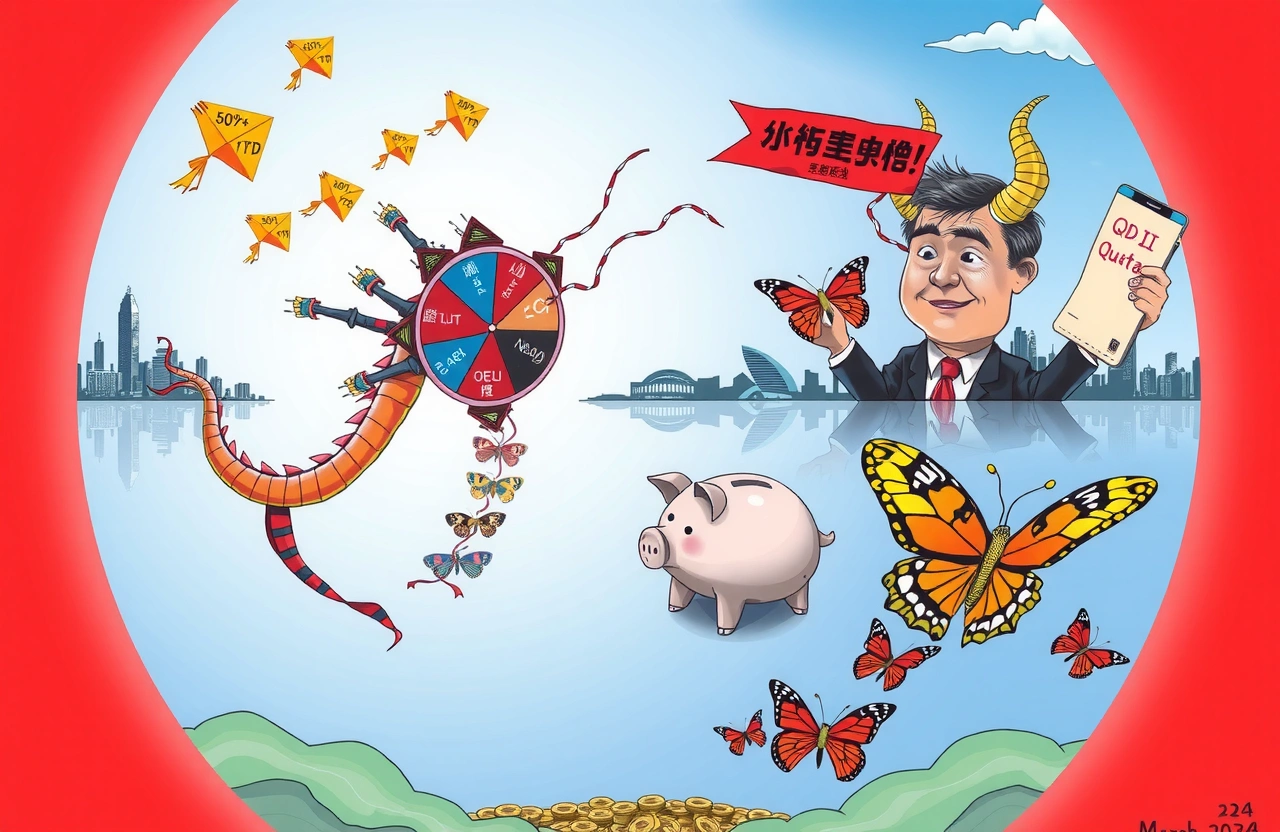In a welcome development for international investors, China’s recent QDII quota allocation has injected much-needed liquidity into the system, prompting multiple funds to ease their subscription limits. This comes as Hong Kong-focused QDII funds dramatically outperform their U.S. counterparts despite Nasdaq’s record highs, creating intriguing market dynamics.
Summary of Key Developments
- State Administration of Foreign Exchange (SAFE) allocated fresh QDII quotas totaling billions in late June
- Leading fund houses including E Fund and Huabao eased subscription limits on 15+ QDII products
- Hong Kong-focused funds deliver 50%+ returns year-to-date as U.S. counterparts trail at 6-8%
- Market divergence continues with Hong Kong valuations remaining below historical averages
- New QDII applications from 11 asset managers pending regulatory approval
QDII Thaw: How New Quotas Changed the Landscape
The long-awaited QDII quota allocation arrived in late June like monsoon rain after drought, with SAFE distributing approximately $1.71 billion across 43 institutions. Public funds emerged as the primary beneficiaries – industry leaders like E Fund secured $50 million, while newcomers like Ruifu Fund gained their first-ever allocations. This triggered immediate reactions across fund houses:
Subscription Adjustments in Action
On July 7 alone, E Fund announced adjustments for five core products. The Nasdaq 100 ETF Connect fund saw its daily purchase limit increase twentyfold from 100 to 2,000 RMB. Similarly, Huabao Fund tripled purchase limits across three U.S.-focused products. As one Shanghai-based fund manager noted: “This quota release alleviates years of pent-up demand. Our Hong Kong healthcare fund had been oversubscribed by 300% before restrictions.” Yet limitations persist with 221 QDII funds maintaining access controls.
Performance Paradox: Hong Kong Outshines U.S. Markets
While Nasdaq celebrates record highs, the real QDII success story emerges from Hong Kong. Healthcare-focused funds dominate the leaderboard, with ChinaAMC Healthcare Equity delivering 54.2% returns versus 8.3% for comparable U.S. tech funds. This outperformance stems from unique drivers:
- Southbound inflows averaging 200B-300B HKD monthly via Stock Connect programs
- Persistent valuation discount: Hang Seng Index trades at 9.2x P/E versus 21x 10-year average
- Biotech resurgence with HK-listed innovators like BeiGene gaining 67% year-to-date
The Hidden Opportunity in Hong Kong
Zhonggeng Fund’s analysis reveals compelling data: nearly 60% of Hang Seng constituents trade below book value despite improving fundamentals. “We’re witnessing the perfect valuation storm,” explains CIO Qiu Jianrong. “Global investors overlook China’s innovator firms clustering in Hong Kong, while domestic institutions face allocation pressures.” Credit Suisse data confirms mainland investors now hold 12% of Hong Kong’s free float versus 3% in 2019.
U.S. Market Outlook Amid Regulatory Uncertainty
Meanwhile, U.S.-focused QDII managers navigate conflicting signals. Despite Nasdaq hitting historic highs, regulatory shadows loom large. The potential Trump administration policy shifts create unusual hedging behavior:
- Derivatives trading volumes for U.S. ETFs surged 40% since June
- Tech sector allocations dropped to 18-month lows despite index performance
- Cash reserves in QDII products doubled year-over-year to 8.3% of AUM
The Soft Landing Question
“Markets priced perfection ignores political risks,” cautions Pu’an Fund Global Strategist Mei Li. Her team’s models show US equity sensitivity to election outcomes has tripled since January. Nevertheless, Allianz sees persistent strength: “AI infrastructure demand alone could add 7-9% to tech earnings through 2025.” This technological tailwind keeps managers cautiously engaged.
Investor Pathways: Navigating New Opportunities
The QDII reopening creates concrete options for retail and institutional investors alike:
- Tiered access strategy: Start with recently expanded funds like E Fund Biotech (SCI: 110031)
- Geographical rotation: Rebalance from richly valued U.S. sectors to Hong Kong healthcare
- Precision timing: Target H-shares during Shenzhen-Hong Kong Stock Connect sessions
- Secondary market options: Utilize QDII LOFs trading near NAV discounts
The Path Forward
The QDII landscape undergoes its most significant shift in three years, combining regulatory easing with unprecedented performance divergence. Patient investors should monitor two critical signposts: Hong Kong valuation normalization trajectories and U.S. election policy clarity. Proactive institutions like China Asset Management are already restructuring allocation models. We expect December will demonstrate whether this QDII reopening represents short-term relief or sustainable market transformation – for ready investors, substantial opportunities await beyond reopened doors.
Data-driven investors should track SAFE’s quarterly allocation patterns and consider exposure through newly launched channels. As Hong Kong’s discount persists despite stellar performance, informed investors might allocate incrementally while balancing against U.S. volatility risks.




